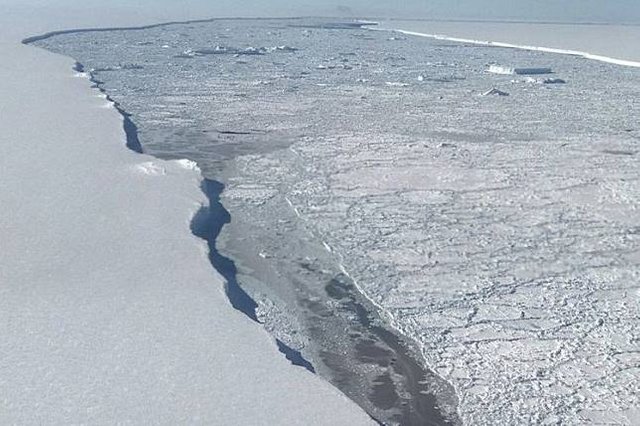The Antarctic Hidden Expedition Continues, What's There?

There is a remote area in Antarctica that is isolated from light for thousands of years. No one knows what is behind the frozen and dark waters.
Until finally in July 2017, a giant iceberg separates itself from an ice sheet called A-68 or Larsen C. The initially ice-covered area unveiled the 5,800-square-kilometer seabed, which for 120,000 years has never enjoyed sunlight.
And the good news is, we do not have to wait much longer to know the marine ecosystems in the region. This week, a team of scientists led by the British Antarctic Survey (BAS) departs there to study it.
Researchers are competing to explore the hidden world as soon as possible. They fear the sun exposure will change the ecosystem there quickly.
"We really do not know what's beneath it because it's covered in a thick layer of ice hundreds of meters," said Katrin Linse, a biologist who involved the expedition was quoted as saying from Science Alert, Tuesday (13/2/2018).
"It's important we get there quickly before the underwater environment changes as sunlight enters the water and new species begin to colonize," he said.
Linse and his colleagues will leave for the Falkland Islands first and then move to the point of destination.
Keep in mind, the location of the hidden world is so remote. But researchers still take the risk to achieve it.
"Larsen C is far south and there is plenty of ice in the area, but this expedition is important for science so we will try to get the best results," said David Vaughan, director of BAS.
If it arrives on time, it could be that researchers will see how an ecosystem is formed or developing.
Previously researchers already have hypotheses about life under this ice sheet. They say there may be similarities to deep-sea ecosystems. There are phytoplankton and zooplankton which are important foods.
Now just one more step to test their hypothesis.
On a three-week voyage, the researchers will collect living creatures that live on the ocean floor, such as microbes and plankton, sediments and water samples.
In addition they will also document evidence of new mammals or birds that may have immigrated into open water.
Although admittedly there is no picture with what is on location, the researchers are enthusiastic about this expedition.
"We went to an area where we did not know what we were going to find and this was interesting, but we hope to find something extraordinary," Linse said.
And certainly the journey is a rare opportunity to be exploited, since such natural observational windows sometimes take 10,000 years to open.
